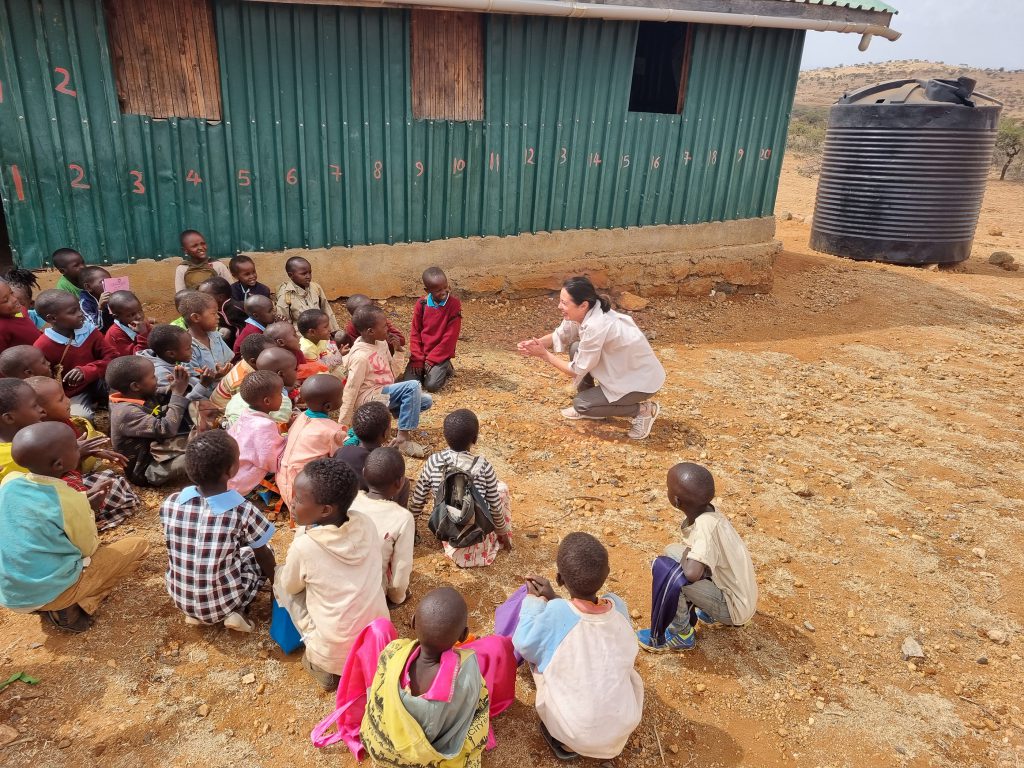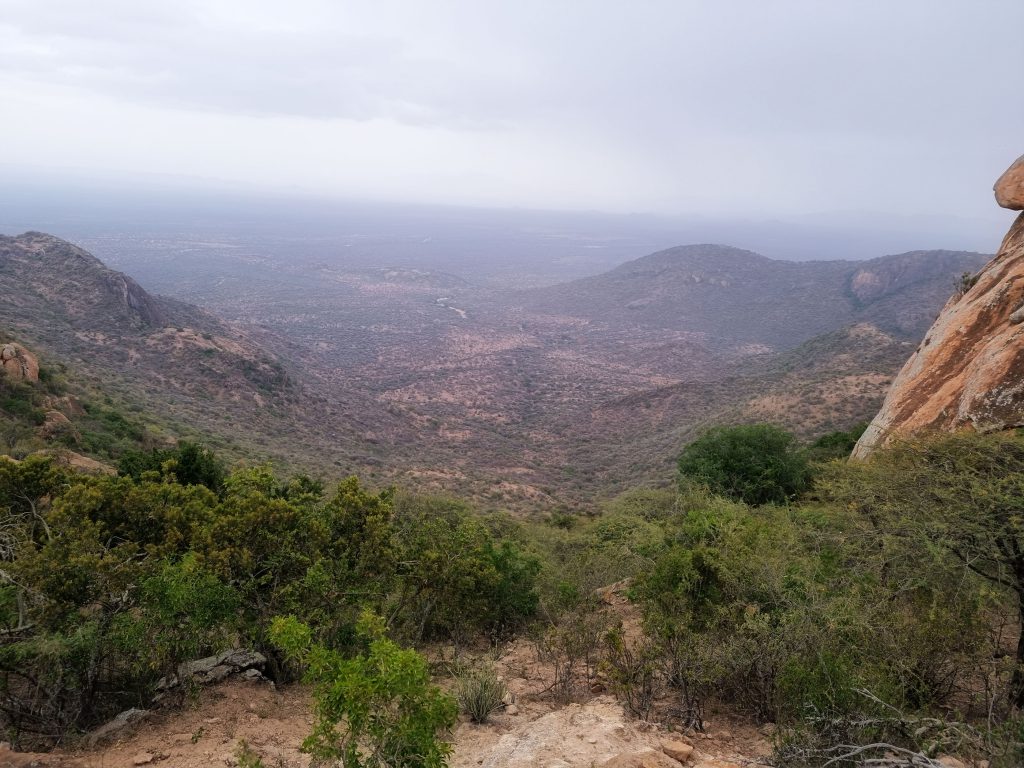The project
Our local partner
Our local partner, the Ol Lentille Trust was founded in 2005, with the aim of supporting Conservation, Education, Healthcare, and Water Management in an area of the Laikipia North and Isiolo districts of northern Kenya. Having completed the building and equipping of a Level 4 hospital, as well as a system of bore holes and water dams, the Trust’s current priorities are Conservation and Education. The Trust is a partnership with the Masai and Samburu communities surrounding Ol Lentille mountain, the second highest point in Laikipia, Kenya. This is an area of amazing natural beauty, of untamed wildlife, of a people with a strong cultural identity – in a country where social, environmental, and political dynamics can threaten survival, health, and nature. The main source of income is pastoralism (i.e. raising livestock). Currently, in the biggest drought for 70 years, and following closures of livestock markets in the pandemic, this livelihood is particularly difficult. Large distances need to be travelled to reach grazing land, and women and smaller children will stay behind at home, leaving them without sufficient milk (the main source of protein).
The OLT’s focus on education enables children of the community to find career opportunities outside of pastoralism, which in turn releases pressure on the land, allowing increased water and food availability for the communities. The education programming also has a strong focus on girls’ education as a means to ensure girls have equal opportunities, avoid early marriage and can make informed decisions about their own lives, health and wellbeing. The OLT has had past projects working on alternatives to Female Genital Mutilation (FGM) which is illegal in Kenya but still widely practiced in some pastoral communities. Working with Maasai women’s groups who had successfully promoted alternatives in other communities, attitudes were able to be shifted and girls able to make empowered choices for their futures. Primary education up to 14 years has been free and compulsory since 2003, but it has taken time for pastoral families to commit to educating all children, due to the burden of animal husbandry, water collection and childcare at home, in addition to the loss of dowry for young girls. OLT has facilitated community education with the local administration to ensure the uptake for education reached 90% and above. Families are now cognizant of the greater earning opportunities for educated adults. However, in times of great economic stress such as the pandemic and current drought, school drop outs increase.
In addition, OLT has supported many community members to become teachers and health workers and worked with government to have them posted to public sector jobs within the community where they have become excellent role models.
The OLT comprises its Kenya NGO, the Ol Lentille Trust Kenya, its US 501(c)(3) the Ol Lentille Foundation, and a UK registered charity, the Ol Lentille Trust. Its Executive Director, as of 2022, is Tess Elias (UK-based) but it is governed by the boards of the three entities, including founders John (former Executive Director) and Gill Elias (education programme lead), and current Chairperson of the OLT-K, Timothy Ole Mosiany, who is also a member of the Maasai community of Laikipia.
Objective of the Proposed Project
Improve availability of and access to education for children in the Tura/Ngabolo area of the Lentille operational area, buy building additional class rooms and related facilities for the children.
The class rooms and facilities will be built by local entrepreneurs, hence creating jobs for the local community.
Problems to address in priority
- Lack of classroom space, classroom equipment, books and learning materials at Tura nursery since child numbers increased
- Lack of water and sanitation facilities at Tura nursery
- Lack of provision of nutritious food for children at Tura
- Difficulties for older children (age 6-8) accessing Primary 1 class due to distance
- Lack of outdoor play equipment
- Lack of teachers for the increased number of children
- Lack of water collection/storage option
Why additional class rooms and facilities are needed?
The first Primary School in the area was Kimanjo Primary, which existed prior to the establishment of the OLT. In 2007, OLT built a full primary school at Ngabolo and another has since been developed 4 km further away, at Nkiloriti. These two schools now have approximately 500 students. Before this, very few children accessed school, as the distance to Kimanjo was too great for younger children and those that did enter school started at around 10 years, thus generally failing to complete education.
Despite improvements in government support over the last 15 years, education is still enormously under funded in pastoralist areas. Class sizes are frequently over 50 students, resources are basic and there is very little government money for new classrooms and facilities . In the last 2 years there has been virtually no food in the schools, and older children frequently only eat one meal a day with younger children eating only twice during drought periods when milk is limited. As a result, up to 70% of children show signs of malnutrition. Ngabolo and Nkiloriti schools are still not achieving the highest marks in their primary examinations, despite good leadership from Headteachers, primarily due to children often starting school late and the younger children having poor attendance, due to distances.
The maps below show the location of Tura Nursery and Ngabolo Primary schools, discussed in this section. The blue rectangle in map 1 denotes map 2, and in map 2 denotes map 3.



Tura nursery is 3.2 km from Ngabolo Primary School and 6.5 km from Kimanjo Primary School. Whilst both Ngabolo and Kimanjo have nursery classes, children in the Tura area are increasingly relying on the Tura nursery due to the proximity of this good quality education for early years, avoiding the need to walk to Ngabolo or Kimanjo. Tura is not registered as a Primary School, and the need for this has not been quantified – a population survey would be needed to see how far children are needing to walk, at what age, to Kimanjo and Ngabolo. It would then need to be discussed with the government, the Group Ranch to allocate the land and apply for school registration, which could potentially take several years. Tura therefore provides increased access (by reducing distance) for the smallest children, up to approximately 7 years of age. After this age they can safely walk to Ngabolo or Kimanjo daily. The biggest threat on this walk is elephants, as there are water sources near all three of the schools. This means that some children of Primary 1 age (6-7) are not moving on to Ngabolo or Kimanjo at the right time due to this distance, and are staying at Tura where only nursery class is provided.
As the Tura nursery has grown (now approximately 70 children), facilities have not grown with it due to lack of available resources. There is 1 classroom and 2 teachers (Jane Maiyani Ndirangu, the teacher-in-charge and James Maiyani), both employed by the County at 8000ksh per month. There are no sanitation facilities. The nursery does not have sufficient equipment e.g. for playtime and for classroom work (desks, etc.). There is a nearby water source (pumped from a borehole) but the storage tank is in need of repair. Ideally the classrooms (as with all construction by the Ol Lentille Trust) would have rainwater catchment capacity.
To improve access to education, particularly in the current drought situation, providing reliable food at school is key, in order that children are able to attend and relieve some pressure on their family to provide this meal. At the moment, children at Tura do not receive food during school. In Primary school (at Ngabolo/Kimanjo) there is also limited food, which depends on government budgets and any food provided through Ol Lentille Trust projects (e.g. during times of crisis – current drought – the OLT is providing food to schools to relieve pressure on families).
On graduating from Tura nursery, children will go on to Kimanjo or Ngabolo Primary schools and start in Primary 1 class. This class should be entered at 6 years of age. In order to ensure children aged 6-7 can access this class at the right time, without the risk/distance of the walk to Ngabolo/Kimanjo, a Primary 1 class and teacher should be added at Tura. In addition, for children aged 7 and 8 going on to Primary school, the risk of their walk can be reduced by employing a teacher who can walk with them to and from school (choosing Ngabolo since this is closer than Kimanjo) and can work as an Assistant Teacher under the Ngabolo Headteacher to improve availability of education at Ngabolo for children from the Tura area.





